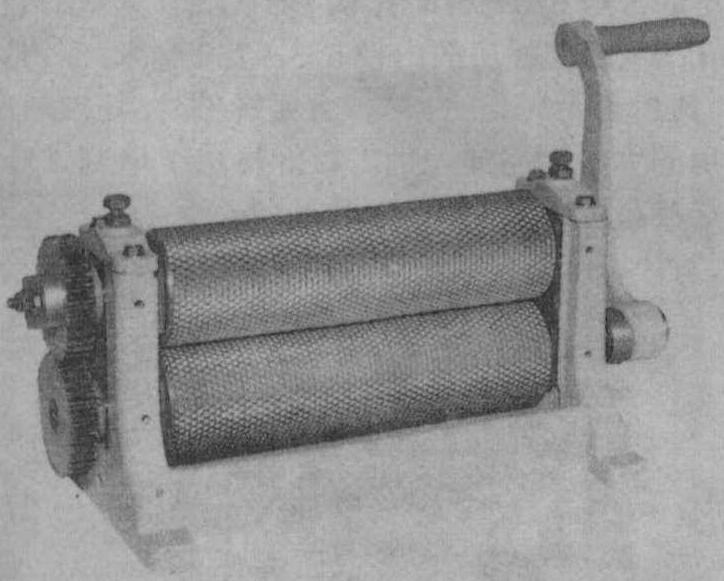巢础机comb foundation roller
用蜂蜡轧制工蜂巢房基础的机器。人工巢础的研究约始于19世纪中叶,1857年德国J.梅林发明了平面巢础压印器, 制作了人工巢础。1861年, 美国S.瓦格纳提出了在绞衣机辊筒上雕刻巢房底模的设想。1866年美国K.布拉泽斯,1874年英国韦斯制造了辊筒式巢础机, 但轧制的巢房大小不一。1875年A. I. 鲁特和A. 沃什伯恩合作研制成实用的辊筒式巢础机:一对辊筒上雕刻着许多凹凸房眼, 蜡片或蜡液通过辊筒轧成巢础。以后, 英国、德国、瑞士、苏联等欧洲国家和中国相继生产了多种手摇、电动巢础机。普通巢础机主要由轧花辊筒、传动装置、机座等部件构成,机座附有水盘(见图)。中国制造

普通巢础机
的意蜂和中蜂巢础机,两个房壁的中心距分别为5.33毫米和4.62毫米,巢房房底夹角120°;辊筒外径意蜂巢础机为86毫米,中蜂巢础机为74.8毫米。
巢础机comb foundation machine
用于生产蜡质巢础的机具。系1857年德国梅林(J.Mehring)发明,与活框蜂箱、分蜜机,同为养蜂的三大蜂具。有手摇巢础机、电动巢础机和全自动巢础机3个类型。手摇和电动巢础机均由轧光机和轧花机(习称“巢础机”)构成。手摇的靠摇柄人力带动,电动的靠电动机驱动。轧光机由一对光洁度较高的锡合金机辊以及转动装置和机座构成,用于将生产巢础的蜡板或蜡片轧制成厚度均匀、表面平滑的光蜡片,以使轧花机轧制出的巢础房眼均匀。轧花机由一对具巢房房底模型的锡合金机辊、转动装置和机座构成,用于将光蜡片轧制成具有整齐巢房房底模型的巢础。中国制造的巢础机有中蜂的和意蜂的两种,分别用于生产中蜂巢础和意蜂巢础。全自动巢础机整套设备由蜂蜡熔化消毒锅、保温锅、轧花机、纵横向裁础刀、冷却系统、传送辊和转动装置构成;生产时,经熔化消毒的液态蜡,直接注入轧花机轧出巢础带,然后经纵向和横向裁刀裁切成所需大小,输送到包装台进行包装。这种巢础机仅需一人管理,每小时可生产巢础50~60 kg,生产效率高。
巢础机
生产蜡质巢房基础的机器。1857年德国J.梅林发明。三大蜂具之一。分手摇式、电动式和全自动式3种。中国制造的巢础机分中蜂和意蜂2种。分别生产中蜂巢础和意蜂巢础。辊筒外径中蜂机为74.8 mm,意蜂机为86 mm。